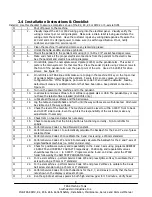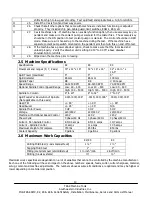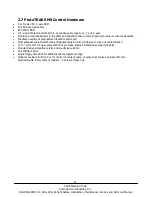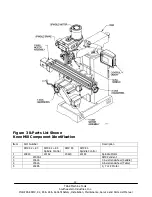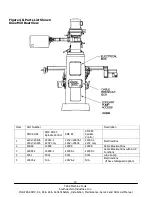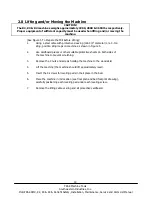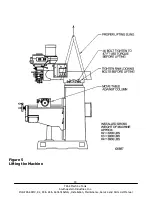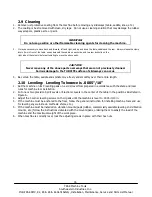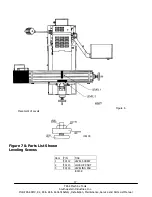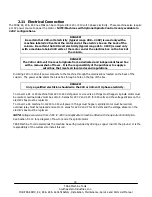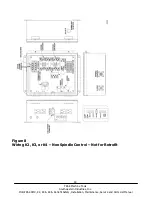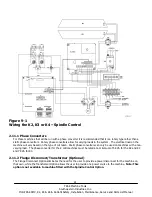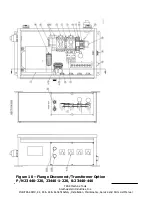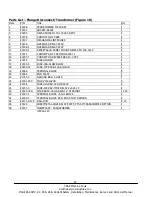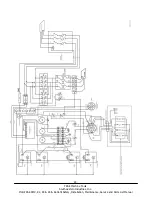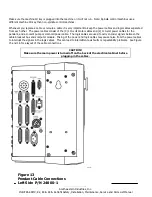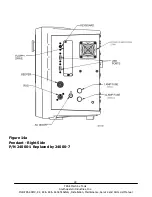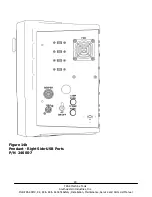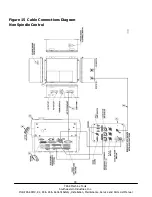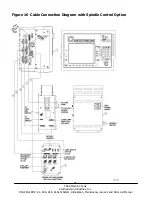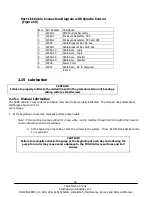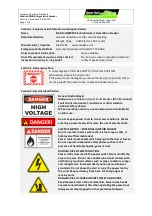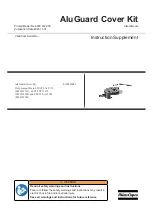
18
TRAK Machine Tools
Southwestern Industries, Inc.
ProtoTRAK SMX, K2, K3 & K4 & Retrofit Safety, Installation, Maintenance, Service and Parts List Manual
2.11 Electrical Connection
The TRAK K2, K3 & K4 Knee Mills can be configured for 220 or 440 volt 3 phase electricity. These machines also require
a 110V power source to power the control.
NOTE: Machines with Optional Spindle Control is only available in
220 V configurations.
DANGER!
Be certain that 200-volt electricity (typical range 208 – 240V) is used only with a
machine labeled 220 volts at the motor and at the electrics box on the back of the
column. Be certain that 400-volt electricity (typical range 415 - 460V) is used only
with a machine labeled 440 volts at the motor and at the electrics box on the back of
the column.
DANGER!
The 220 or 440-volt line must originate from a dedicated and independent fused box
with a manual shut-off lever. It is the responsibility of the purchaser to supply a
wired box that meets all local codes and regulations.
Incoming 220 or 440-volt power connects to the machine through the electrical box located on the back of the
column. The power cable enters the black box through a hole on the top of the box.
DANGER!
Only a qualified electrician should wire the 220 or 440-volt 3-phase electricity.
To convert a K2 or K3 machine from 220 to 440 volt power or vice versa 3 things must happen: spindle motor must
be rewired, overload relay must be set to 8.5 amps for 220 V and 4.25 for 440 volts and the voltage stickers on the
electric’s box must be replaced.
To convert a K4 machine from 220 to 440 volt power 3 things must happen: spindle motor must be rewired,
overload relay must be replaced and set to 14 amps for 220 V and 7 for 440 volts and the voltage stickers on the
electric’s box must be replaced.
NOTE:
Voltage conversion from 220V to 440V not applicable to machine fitted with the Spindle Control Option.
See Section 5.1.12 for a diagram of how to rewire the spindle motor.
TRAK Machine Tools recommends the machine be earth grounded by driving a copper rod into the ground. It is the
responsibility of the customer to install this rod.






